How to do kegel exercise for pregnancy
Kegel Exercises During and After Pregnancy
You've heard Kegels mentioned from time to time, but just what are these exercises, and what do they do? These invisible exercises strengthen the pelvic floor muscles that help support your bladder, uterus, and rectum, and they are great to do both during and after pregnancy. Read on to learn about the benefits of Kegel exercises and how you can add them to your daily routine.
What Is Kegel Exercise?
Kegel exercise is a form of pelvic floor exercise that involves squeezing and relaxing muscles in the pelvic and genital areas. These muscles support the pelvic organs, including the bladder, uterus, small intestine, and rectum. Regular Kegel exercise during pregnancy and after you’ve given birth can help improve and maintain your bladder and bowel control by increasing the strength, endurance, and correct function of these important muscles. Kegels can be beneficial throughout life, and you might want to begin doing them during pregnancy or after your baby is born, when pelvic floor muscles often need to be strengthened.
The good news is that you don’t need to join a gym to train these muscles. Kegels can be done discreetly as a part of your daily routine.
Benefits of Kegel Exercises for Women
The benefits of doing Kegel exercises — especially during pregnancy and after giving birth — include:
Improved bladder control. Many women experience leaking urine during pregnancy or after having given birth. The risk increases with a vaginal delivery, as well as with having had a greater number of children. Kegels can help prevent or treat conditions like urinary incontinence — when you feel the strong urge to pee and pass urine before you can get to the bathroom, or stress incontinence, which involves leaking a few drops of urine when you cough, laugh, or sneeze.
Strengthening pelvic organ support. Vaginal childbirth is one potential cause of pelvic organ prolapse (when the uterus, urethra, and/or bowel sag down into the vagina).
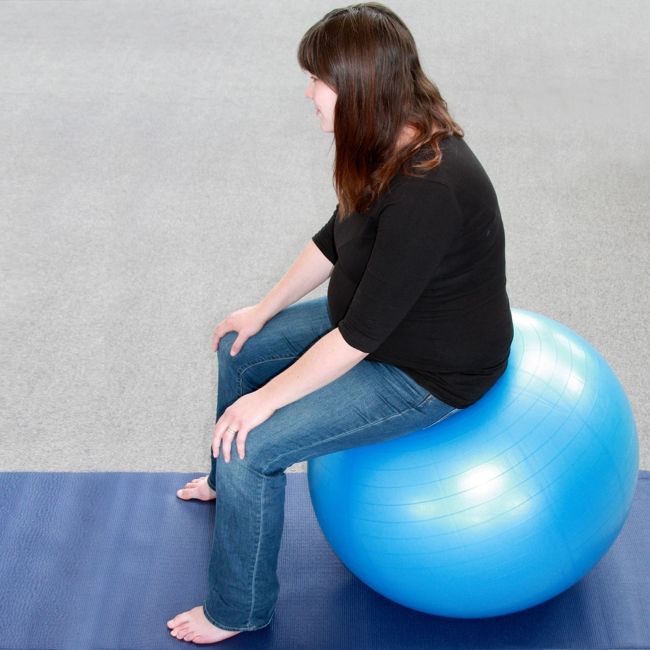 This is because pregnancy and vaginal childbirth can weaken the pelvic floor muscles, so they don't provide enough support for the pelvic organs. As part of a treatment plan, your doctor may recommend Kegels.
This is because pregnancy and vaginal childbirth can weaken the pelvic floor muscles, so they don't provide enough support for the pelvic organs. As part of a treatment plan, your doctor may recommend Kegels.Reduced risk of fecal incontinence. This is a condition that causes you to leak stool before you make it to the bathroom. Kegels can help strengthen the rectal muscles to help prevent this.
Strengthening the pelvic floor muscles during pregnancy also helps you develop the ability to relax and control these muscles in preparation for labor and birth. In the postpartum period, Kegels can help heal perineal tissues, which are stretched during vaginal birth.
How to Do Kegel Exercises
Kegel exercises are easy to do. It’s all about squeezing and relaxing the same muscles you would use to stop a stream of urine. Here’s how to do Kegels:
Find the right muscles. To do this, you can insert a clean finger into your vagina and squeeze the muscles you would use to hold in gas.
 If you feel a tightening around your finger, you’re doing it right. You can also imagine you are trying to stop passing gas or trying to stop the flow of urine to locate the right muscles. If you’re still unsure, your healthcare provider can help you locate the right muscles.
If you feel a tightening around your finger, you’re doing it right. You can also imagine you are trying to stop passing gas or trying to stop the flow of urine to locate the right muscles. If you’re still unsure, your healthcare provider can help you locate the right muscles.
Get comfortable. At first, you may find it easiest to practice lying down. Later on, you'll be able to do them lying down, standing, or even while sitting.
Squeeze the pelvic floor muscles, relax, and repeat. Here are a few different Kegel exercise routines to try:
Long hold. Squeeze your pelvic floor muscles and hold for several seconds. Then relax for a few seconds and repeat. Initially, you may only be able to hold for one or two seconds, but over a few weeks, you'll gradually be able to increase the hold time by a second or two until you can hold for 10 seconds. You can try to do this 10 times in a row, but if this is too hard, start by doing fewer repetitions.
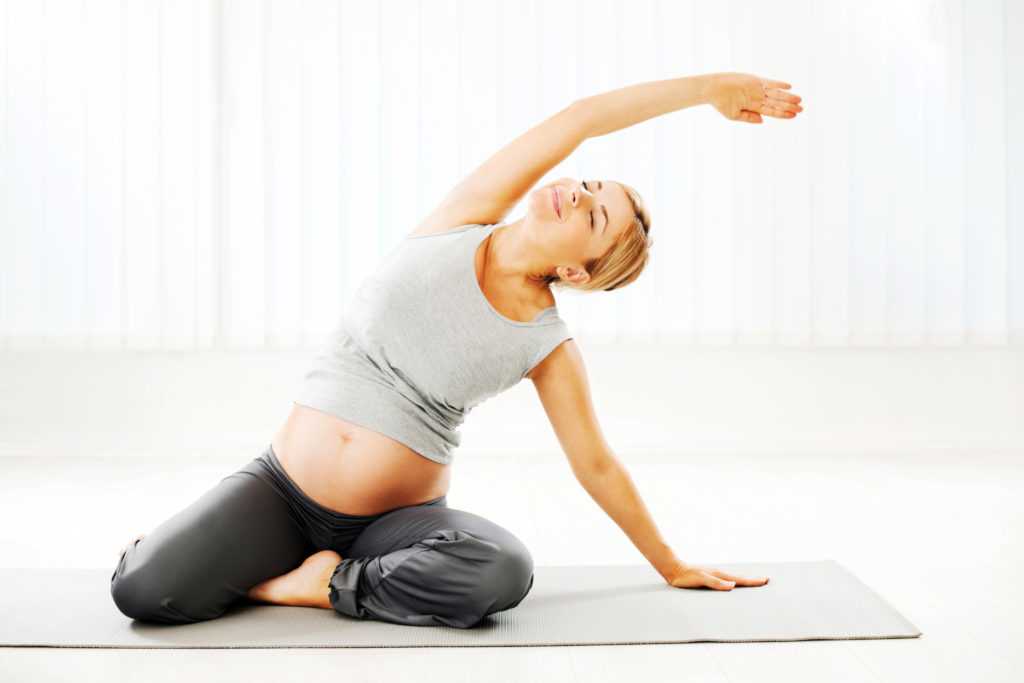 As you practice, you might feel the contraction letting go, and that's OK. Just focus on retightening the muscles. Over time, you'll notice the contraction itself becoming stronger, too.
As you practice, you might feel the contraction letting go, and that's OK. Just focus on retightening the muscles. Over time, you'll notice the contraction itself becoming stronger, too.Contract and release. Quickly tighten and relax the pelvic floor muscles several times in a row.
Hold for three, relax for three. Hold the squeeze for three seconds, relax for three seconds, and repeat.
Increase the intensity as your muscles get stronger. It's best to start small and gradually increase the number of repetitions, the duration of each squeeze, and the frequency of daily practice sessions as the muscles get stronger. Read more about when and how often to do Kegels in the next section.
As with all types of exercise, you will need to stick with Kegels and do them correctly to see the best results. Typically, women report noticing better bladder and bowel control after about 6 to 12 weeks. For continued results, make Kegels a permanent part of your daily routine.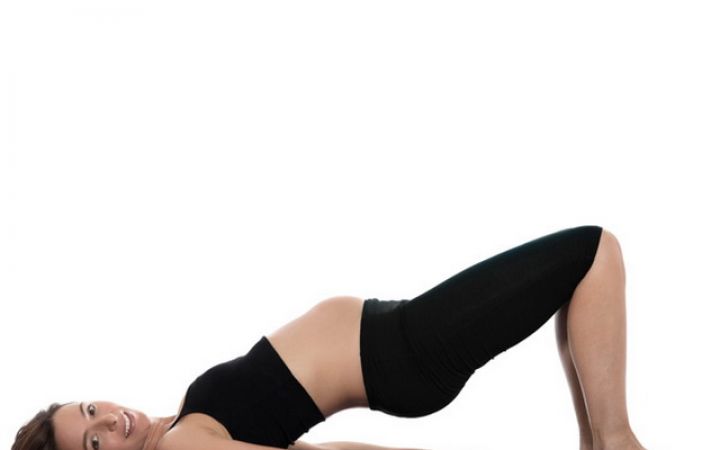
When to Do Kegels and How Often
If you are pregnant or have just had a baby, it's best to ask your provider before starting. During pregnancy, you may want to start in the second trimester, which starts at around 14 weeks pregnant. This is when many moms-to-be experience a much-needed energy boost. After your baby is born, you may be able to start doing Kegels within a few days of an uncomplicated vaginal birth — just make sure you feel ready. If you had complications during vaginal birth or had a c-section, wait until the doctor gives you the all clear.
There is no set rule on how often to do Kegels. Some experts recommend doing Kegels at least twice a week, while others recommend doing them daily. There are many options in terms of how many Kegels to do and how often. For example, your healthcare provider may suggest doing 10 sets of Kegels three times per day; doing 50 squeezes throughout the day; or practicing twice a day before increasing to three times a day. With a little practice, you'll be able to do them while you're relaxing on the couch, waiting in line at the store, or even lying in bed.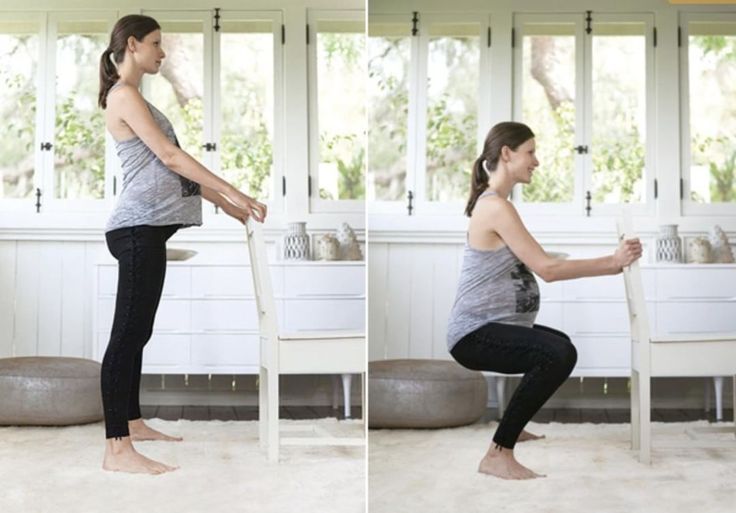 You can also contract your pelvic floor muscles before and during any situation where you might leak urine, such as when you sneeze or laugh.
You can also contract your pelvic floor muscles before and during any situation where you might leak urine, such as when you sneeze or laugh.
Tips for Doing Kegel Exercise
To get the most out of doing your Kegels, keep these tips in mind:
Don't do Kegels while peeing, as this may prevent your bladder from fully emptying.
Don't strain or hold your breath, and keep your abdominal, buttock, and thigh muscles relaxed.
Don't overdo it. After starting to do these exercises, it can be normal to feel some soreness around the pelvic area, but if you feel pain, stop and talk to your doctor.
Doing these exercises regularly is important. If you find yourself forgetting, there are apps you can download that remind you to do your Kegels and guide you through different training sessions.
Some women find contracting the pelvic floor impossible to start with, or they find it tricky to locate the right muscles. Your healthcare provider may recommend biofeedback training, which helps check which muscles are being contracted, or electrical stimulation, which uses painless electric currents to contract the correct muscles.

Kegels are your little secret — no one will ever know when you're working hard on your pelvic floor muscles. But, it can also be great for your overall physical and mental health to do other forms of pregnancy exercise, like prenatal yoga. Anything you do to keep moving and stay fit will help you prepare for motherhood!
Kegel Exercises - American Pregnancy Association
Kegel exercises, also called pelvic floor exercises, help strengthen the muscles, tissues and ligaments stretching from the pubic bone in front to the read end of the spine in back. It functions like a hammock to support the uterus, bladder, intestines and bowels. Kegel exercises also help strengthen vaginal muscles.
What are the benefits of pelvic floor exercises?
Pregnant women who perform Kegel exercises often find they have an easier birth. Strengthening the pelvic floor muscles during pregnancy can help you develop the ability to control your muscles during labor and delivery.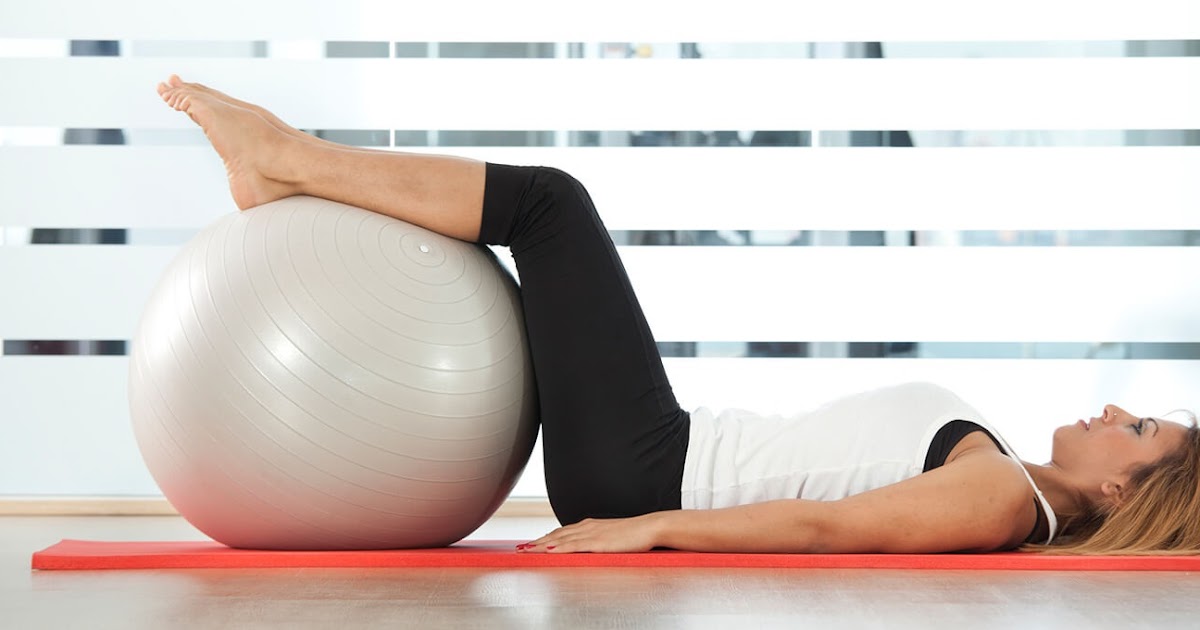 Toning these muscles will also minimize two common problems during pregnancy: decreased bladder control and hemorrhoids. Other benefits include:
Toning these muscles will also minimize two common problems during pregnancy: decreased bladder control and hemorrhoids. Other benefits include:
- Toned and strengthened pelvic floor muscles help reduce the risk of a prolapse
- Proper bladder and bowel movements, relief from constipation and minimal possibilities of hemorrhoids
- Lessens instances of urinary incontinence or leakage (common during all trimesters of pregnancy) when laughing, sneezing, coughing or carrying something heavy
- Helps support the increasing weight of the growing baby
- Proves beneficial in the ninth month as it relaxes the pelvic floor, shortening the second phase of labor as you are attempting to push the baby out, also minimizing the chances of requiring an episiotomy
Kegel exercises are also recommended after pregnancy to promote perineal healing, regain bladder control, and strengthen pelvic floor muscles. The best thing about Kegel exercises is that they can be done anywhere, and no one knows you’re doing them.
How to do Kegel Exercises
- There a few ways to locate your Kegel muscles. You can insert a finger into the vagina, and try to squeeze the muscles surrounding it. Or you can practice stopping the flow of urine when urinating. (However, you don’t want to do this too often during urination because it can actually weaken the muscles over time and/or increase your chance of a urinary infection.)
- Once you have located your pelvic floor muscles, contract these muscles for 5-10 seconds, then relax, repeating 10-20 times. (Make sure to empty your bladder before doing your Kegels!)
- While exercising your pelvic floor, avoid pulling your stomach in, pausing your breath, moving your legs, or squeezing your buttock and abdominal muscles . The only area you should be working is the pelvic muscle.
- Do not attempt it while urinating as it might make the muscles weak putting you at the risk of urinary infection.
- If you already have urinary incontinence, attempt to squeeze your pelvic floor muscles the moment you cough or sneeze as this might help in preventing a urine leakage.

- Refrain from overdoing it as then you may have to strain while urinating or during bowel movements.
When to do Kegels?
You can do pelvic floor exercises discreetly just about anytime.
- When you’re stopped at a red light
- In the waiting room at the midwife or doctor’s office
- Drive-through’s such as the bank, dry cleaners, and pharmacy
When to expect results
If you do Kegel exercises regularly, you can expect results — such as less frequent urine leakage — within about a few weeks to a few months. For continued benefits, make pelvic floor exercises a permanent part of your daily routine.
When you’re having trouble
If you’re having trouble doing Kegel exercises, don’t be embarrassed to ask for help. Your doctor or other health care provider can give you important feedback so that you learn to isolate and exercise the correct muscles.
Are Kegel weights and balls safe while pregnant?
Kegel weights or balls, also known as pleasure balls, do the work of Kegel exercise as they are said to strengthen the vaginal muscles, improve bladder control as well as increase sex drive. However, attempting to insert it into your vagina may not be a proper thing to do when pregnant or during nursing as there are risks of bacterial infections. Hence, a doctor’s advice is always needed if you intend to use Kegel balls when pregnant.
However, attempting to insert it into your vagina may not be a proper thing to do when pregnant or during nursing as there are risks of bacterial infections. Hence, a doctor’s advice is always needed if you intend to use Kegel balls when pregnant.
Want to Know More?
- Exercise During Pregnancy
- Pregnancy Nutrition
Compiled using information from the following sources:
Mayo Clinic, https://www.mayoclinic.com
Cleveland Clinic Health System, https://www.cchs.net/
Pregnancy, Childbirth, and the Newborn: The Complete Guide. Simkin, Penny P.T., et al, CH. 6.
how to do it right, benefits, effectiveness, contraindications
The author of the technique to help strengthen the muscles of the pelvic floor is Arnold Kegel, a professor of gynecology and sexologist from the USA. Kegel exercises for women during pregnancy will help you learn how to control intimate muscles (useful during labor) and help reduce the risk of tears in the perineum.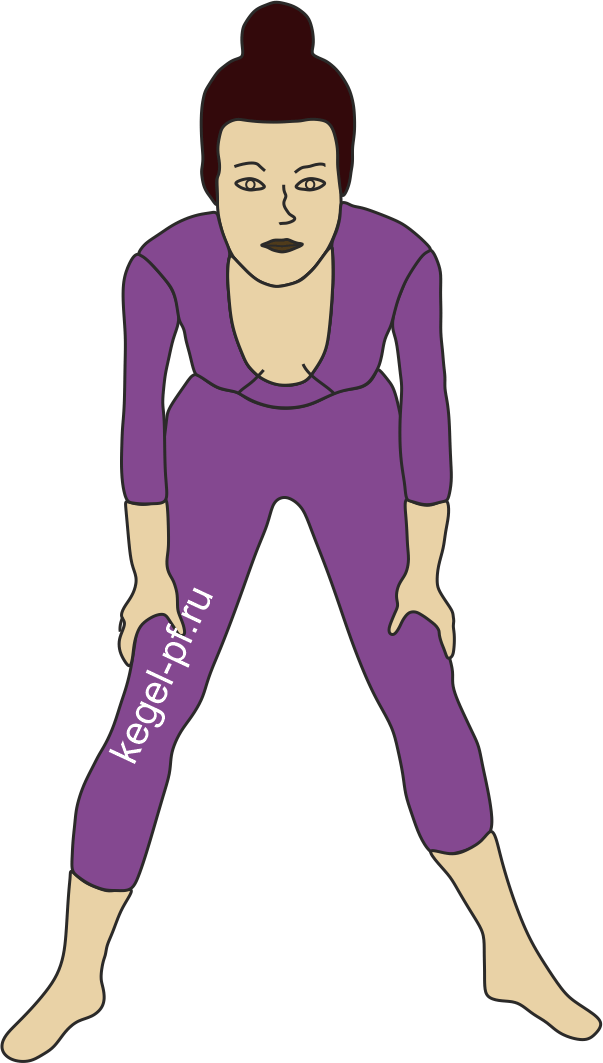 The muscles of the pelvic floor during pregnancy lose their elasticity due to the constant pressure on them from the enlarged uterus. Simple, but at the same time effective muscle training will help restore their elasticity and tone.
The muscles of the pelvic floor during pregnancy lose their elasticity due to the constant pressure on them from the enlarged uterus. Simple, but at the same time effective muscle training will help restore their elasticity and tone.
The main thing is to correctly identify the right muscles and remember how to do the exercises. Finding muscles is not difficult - during the next visit to the toilet, you need to abruptly stop urination, and then alternately squeeze and relax the muscles found in this way several times, not including the muscles of the press, buttocks, legs in the process. If it works, you can start charging.
Benefits and harms of intimate gymnastics
Regularly performing each Kegel exercise for women before childbirth, you can get the following results in a month:
- flabby pelvic muscles become toned;
- general well-being improves;
- will manage to control the muscles during childbirth;
- reduces the level of pain during natural childbirth;
- reduces the risk of complications, ruptures.
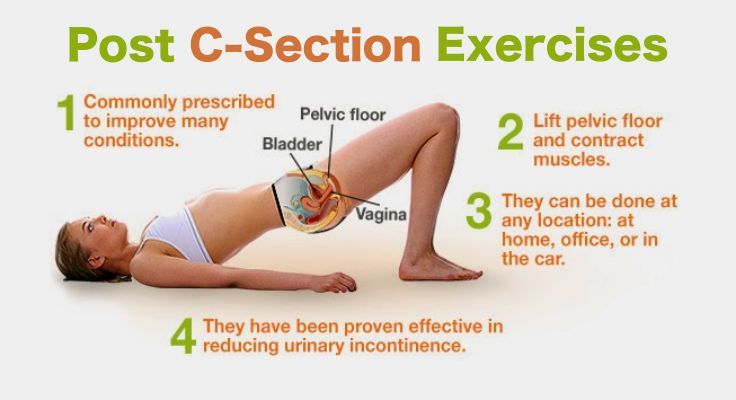
The advantage of this workout is that you can do it anytime, anywhere - at home, at work or on public transport. Gymnastics does not require special training and has no age restrictions, but there are still some contraindications that those who are expecting a baby should be aware of. Below we will describe how to perform the Kegel exercise for pregnant women correctly so as not to harm yourself or your unborn baby.
Contraindications
Before a pregnant woman incorporates any additional physical activity into her daily routine, it is recommended to consult a gynecologist. The doctor will assess the condition of the mother and fetus and tell you if it is possible to train. There are restrictions under which Kegel gymnastics is completely excluded or adjusted according to the exercises so as not to harm yourself and the fetus, but to strengthen the muscles. Limitations are the threat of premature birth and miscarriage.
After the 16th week of pregnancy, gymnastics should not be performed in the supine position in order to eliminate pressure on the inferior vena cava.
In addition to the threat of premature birth and miscarriage, Kegel exercises for women during pregnancy are prohibited with severe toxicosis, uterine bleeding, and diseases accompanied by a feverish state. It is advisable to discuss all innovations in the daily routine and diet in advance with your doctor. He is responsible for the condition of the mother and child, has sufficient experience and knowledge to make informed decisions.
The doctor will determine which Kegel exercises are acceptable and which ones should be avoided. Even in the case of a calm pregnancy without any pathologies, you should not practice in a lying position, only sitting or standing.
Powerful 4-piece set
It is convenient to study yoga classes from a video, but this will not work with Kegel gymnastics - you will have to carefully read the description of the exercise and perform it as accurately as possible. In addition to the starting position of standing and sitting, pelvic exercises during pregnancy can be performed on all fours.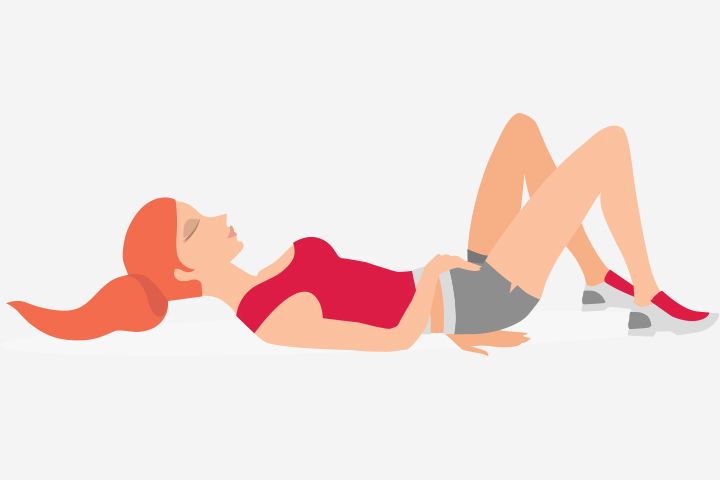 You need to start with 3-5 repetitions, eventually bringing the number of repetitions of each element to 20-30.
You need to start with 3-5 repetitions, eventually bringing the number of repetitions of each element to 20-30.
Among the large number of exercise options for pregnant women, 4 main elements are suitable:
- Sit comfortably. Bend your legs and slightly spread apart. Tighten the muscles of the perineum for 5-10 seconds, relax. Repeat 3-5 times.
- Imagine the vagina as an elevator shaft, where the entrance is the lower floor, the cervix is the upper one. The task is to smoothly contract the muscles from the bottom up, lingering for 2-3 seconds on each imaginary floor. “Having risen to the last floor”, you gradually need to “go down”, relaxing the muscles in turn on each “floor”. At first, performing such a pelvic floor exercise for pregnant women will seem difficult, but with each workout it will become easier.
- In addition to the vaginal muscles, the muscles of the anus are involved. The exercise is performed at a fast pace. Squeeze the vagina, then the anus, then relax the muscles in reverse order.
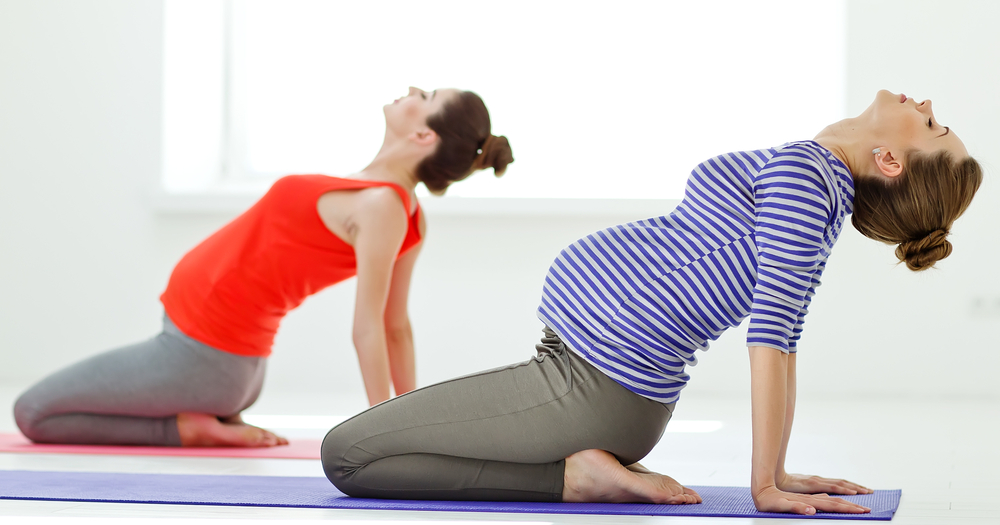
- Attention! Before performing the Kegel exercise for pregnant women, you need to empty your bladder and intestines. Take a comfortable posture. Hold your breath, gently and smoothly push, as during a bowel movement, but not with the anus, but with the vagina. To assess the correctness of the exercise, put your hand on the perineum. If you feel the pressure of the muscles of the vagina, then everything is correct. After relaxing, repeat the task. The exercise will teach you to control the muscles that are needed for effective attempts during labor.
The right approach: what are the nuances to consider
If you are going to perform Kegel exercises during the 1st, 2nd and 3rd trimesters, you must adhere to the following recommendations:
- take a comfortable position, so that nothing presses or causes pain;
- breathe calmly and measuredly;
- strain only the necessary muscles so as not to harm the child and yourself;
- do not be zealous, unnecessary fatigue is useless;
- practice daily;
- If you experience discomfort, stop exercising and consult a doctor.

It is advisable to start gymnastics early, performing 20-30 contractions every day. The goal of training is to feel and control the work of the muscles. It may be difficult at first, but over time, the muscles will be easy to control. The load should be increased gradually.
Kegel exercises are useful not only for strengthening the muscles of the vagina, they help control the anal muscles, tone the muscles of the small pelvis. The main condition for success is to regularly perform the training complex, and then the result from daily exercises will be felt after a couple of weeks.
Kegel exercises, like other exercises, help strengthen muscles. The muscles that are strengthened with Kegel exercises are located in the lower part of the pelvic region and are responsible for the correct positioning of the pelvic organs and also regulate urination. And this is very important for pregnant women. Due to the increase in the size of the uterus and the weight of the growing baby, this area of the body is under a lot of pressure, which can sometimes lead to urinary incontinence and other problems. To do Kegel exercises, you need to find the right muscles, and then train them.
To do Kegel exercises, you need to find the right muscles, and then train them.
Method 1 of 3: Identifying the “right” muscles
1. Try to contract your pelvic floor muscles while urinating. If you squeeze the right muscles, it will stop urination. If you succeeded, you have identified the muscles that need to be activated by doing Kegel exercises.
2. Try to hold back gases. The muscles that are used to expel gas are the muscles you are trying to identify. If you can tense these muscles to keep from gassing, you've found the right muscles.
3. Try to find these muscles with your fingers. If you're not sure you're squeezing the right muscles, try finding them with your fingers. For this:
Wash your hands and put your finger in your vagina. If you feel pressure around him as you try to squeeze your pelvic muscles, you are squeezing the right muscles.
4. Identify these muscles while making love. Try to tighten these muscles when you have sex with your partner. Ask him if he felt pressure around his penis when you tightened the muscles.
If he feels it, you are squeezing the right muscles.
5. Check with your doctor. If you're not sure which muscles you should be training, don't hesitate to contact your doctor to see if you're doing everything right.
Your doctor may also give you some advice regarding these exercises.
Method 2 of 3: Kegel Exercises
1. Empty your bladder before you start exercising. While you may have identified your pelvic floor muscles while urinating, it's not a good idea to practice Kegel exercises while urinating. This is because holding on to urine can lead to unnecessary infections. To avoid infections, always empty your bladder before exercising.
2. Take a comfortable position. Kegel exercises are so easy that you can do them in any position and even during pregnancy. In addition, no one will know that you are doing the exercises. Find the position that suits you best.
Lie down, sit down or stand up. The only thing you should keep in mind is that you should not put pressure on your stomach while doing these exercises.
3. Contract your pelvic floor muscles and hold for three to four seconds. Then relax your muscles. Let them rest for a few seconds, then squeeze them again. It's a good idea to start with three or four seconds.
When it is not so difficult for you to do this exercise, you can increase the time to five seconds.
Repeat this procedure 10 times.
4. Do Kegel exercises three times a day. As mentioned earlier, you can do them anytime, like when you're watching your favorite TV show or standing in line at the grocery store.
Doing these exercises 50 times a day is usually enough to strengthen your pelvic floor muscles. [1]
[1]
5. Try not to pull in your stomach. If you pull in your abdominal muscles while doing Kegel exercises, you won't get the same results when you just squeeze your pelvic floor muscles. To make sure you don't pull in your abdominal muscles:
Place your hand on your stomach and tighten your pelvic floor muscles. If your stomach is shrinking, you need to pay more attention to holding it when you do these exercises.
6. Don't move your feet. Kegel exercises do not require you to move and tense your leg muscles. If you are doing this, you are not doing the exercise correctly and you should consult someone, such as a doctor, who can help you identify the muscles that are involved in Kegel exercises.
7. Try not to hold your breath. Kegel exercises are not meant to be strenuous and you should not hold your breath during the exercises. If you have trouble breathing when you do these exercises, or if you can't help but hold your breath, talk to your doctor to help you do the exercises correctly.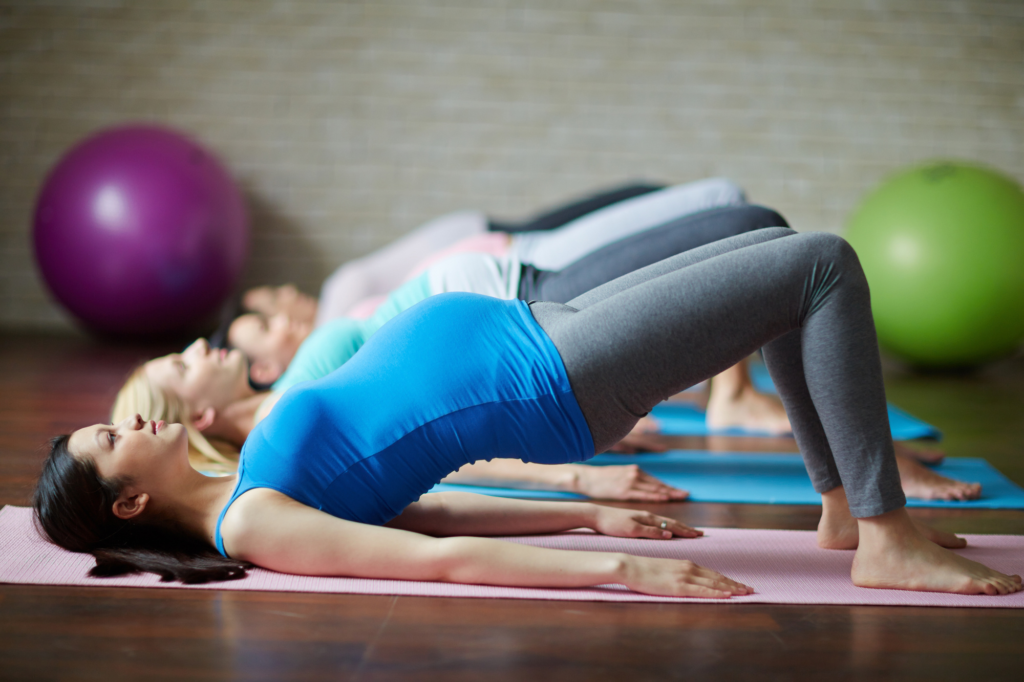
8. Do these exercises throughout your pregnancy. This will help you hold on to urine even if your child is pressing on the bladder. In addition to this, strong pelvic floor muscles will help you during childbirth. They can help:
- Push during childbirth.
- Avoid tissue rupture during childbirth.
Method 3 of 3: Understanding Kegel Exercises
1. Learn about the benefits of Kegel exercises. As your baby begins to grow in your uterus, your enlarged uterus may press on your bladder, making it difficult for you to control your urination. Kegel exercises can help you control your urination. They can also help:
Prevent fecal incontinence.
Make you stronger in childbirth.
Increase blood circulation, which can help prevent hemorrhoids, which happen quite often during pregnancy.
Accelerate the recovery process after pregnancy.
2. Find out when is the best time to start doing these exercises. It is generally recommended that women start doing Kegel exercises in the first trimester of pregnancy. This gives a woman more time to strengthen her pelvic floor muscles before they are put under pressure by the baby's weight and other factors that come along at the end of pregnancy. Starting to train your muscles early gives you enough time to perfect your exercises to the point where they become natural, something you don't even have to think about when you're under the emotional and physical stress of late pregnancy.
Find out when is the best time to start doing these exercises. It is generally recommended that women start doing Kegel exercises in the first trimester of pregnancy. This gives a woman more time to strengthen her pelvic floor muscles before they are put under pressure by the baby's weight and other factors that come along at the end of pregnancy. Starting to train your muscles early gives you enough time to perfect your exercises to the point where they become natural, something you don't even have to think about when you're under the emotional and physical stress of late pregnancy.
3. Do not stop exercising after pregnancy and childbirth. As soon as you recover from childbirth, you can start doing the exercises again. Keep doing them all your life if you want. If you do these exercises, they will help prevent uncontrolled urination due to sneezing, coughing, laughing, as well as fecal incontinence and hemorrhoids.
TIP
Kegel exercises can significantly improve the quality of sex and prevent organ prolapse through the vaginal canal, which occurs in older women.
The source of information
Kegel Exercises for Pregnant Women: Technique for Proper Execution
Many women believe that any physical activity during childbearing is contraindicated. This is an erroneous opinion, since correctly selected loads can only bring benefits. For example, Kegel exercises for pregnant women have been proven effective for decades.
Gymnastics, specially developed by an obstetrician-gynecologist, was originally used to treat urinary incontinence and to treat prolapse of the vaginal walls. Over time, it began to be used to prevent intimate problems in women. The set of exercises itself can be performed by a woman of any age, but for expectant mothers it is especially useful, because during the period of gestation, the uterus stretches, and the pelvic floor muscles experience a lot of stress, which leads to their weakening.
Can pregnant women do Kegel exercises?
Kegel exercises are special gymnastics, the main purpose of which is to strengthen the muscles of the pelvic floor. Gymnastics has a positive effect on childbearing and labor activity, provided there are no contraindications and all recommendations are followed when performing it.
Gymnastics has a positive effect on childbearing and labor activity, provided there are no contraindications and all recommendations are followed when performing it.
A set of exercises for pregnant women has such a positive effect on the body of the expectant mother as:
- prepares the pelvic muscles for the upcoming birth;
- reduces the risk of ruptures during childbirth;
- maintains libido at a high level, normalizes the production of sex hormones;
- prevents the problem of urinary incontinence and hemorrhoids even in the later stages;
- helps to improve well-being;
- improves the feeling during intimacy.
During gymnastics, a woman learns to feel and control her muscles. Such skills can be useful during childbirth. The woman in labor helps the baby move through the birth canal. If you do Kegel exercises for pregnant women in the 3rd trimester or throughout the entire period of bearing a child, the vagina will quickly recover after childbirth.
Contraindications and warnings
Despite all the benefits, the complex has its own contraindications. Doing gymnastics is not recommended in such cases:
with the threat of miscarriage;
for toxicosis;
for preeclampsia;
for hypertonicity;
for uterine bleeding;
for colds and fever.
Gymnastics should also be abandoned in case of problems with the spine in the lumbar region, especially in the acute stage. Can pregnant women do Kegel exercises , the doctor must decide after the examination. Before starting the complex, be sure to consult with a gynecologist.
If pain or discomfort occurs during exercise or after exercise, you should stop it and consult a doctor for advice.
Poor health is also a reason to give up gymnastics. You need to do it in a good mood with a positive mood.
Features of performing exercises at different times
During pregnancy, the body experiences increased stress, so it is important to choose the right exercises. For example, Kegel exercises for pregnant women in the 2nd trimester are aimed at general strengthening of intimate muscles, but in recent months the body is preparing for childbirth, and it should be helped in this.
For example, Kegel exercises for pregnant women in the 2nd trimester are aimed at general strengthening of intimate muscles, but in recent months the body is preparing for childbirth, and it should be helped in this.
First trimester
Kegel exercises for pregnant women in the 1st trimester should be performed in compliance with simple rules:
1. Do not overdo it and do not overload the body. Start exercising with 10-15 minutes and gradually increase the time, the number of approaches.
2. It is important to stick to regularity and do gymnastics every day.
3. Pay close attention to how you feel. If you begin to feel worse, stop the complex.
4. It is necessary to start gymnastics after emptying the bladder. Otherwise, pulling or cutting pains, discomfort may occur.
5. It is recommended to do exercises in the early stages in the supine position.
To understand which muscles to strain, you should do a simple action - stop urinating in the toilet. It may not work the first time, but only in this case there will be the desired effect.
It may not work the first time, but only in this case there will be the desired effect.
Second trimester
As the gestation period increases, the fetus also grows, which puts pressure on the internal organs. To avoid discomfort, Kegel exercises for pregnant women in the 2nd trimester are recommended to be done in a sitting or standing position.
The second trimester is great for expanding the complex and increasing loads. If you practice from the first days of pregnancy, repetitions can be increased up to 30-50 times. The main thing is not to do sudden loads, but to increase the number of repetitions gradually so that the body has time to adapt.
Third trimester
It is a mistake to believe that gymnastics is banned in the later stages. It is possible and even necessary to do Kegel exercises for pregnant women before childbirth, because this is the only way to properly prepare the body for the upcoming labor activity.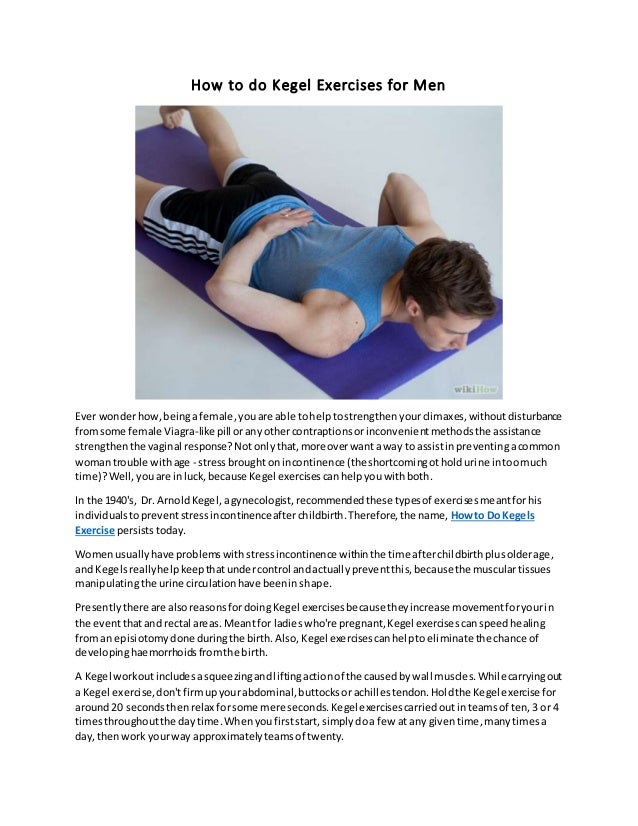 The stronger and tighter the muscles are, the easier the birth will be, and the risk of complications will be minimized.
The stronger and tighter the muscles are, the easier the birth will be, and the risk of complications will be minimized.
General advice:
1. Certain exercises should be avoided to avoid uterine tension and premature labour.
2. During gymnastics, one should be attentive to the sensations and well-being. If discomfort or pain occurs, stop the complex immediately.
3. It is worth sticking to the usual rhythm without increasing the load. Sometimes a slight increase in load is acceptable.
It is necessary to watch the Kegel exercises for pregnant women (3rd trimester) on the video in order to avoid common mistakes when doing gymnastics.
Pregnancy Kegel
An important advantage is that you can do Kegel exercises for pregnant women at home. The expectant mother does not need to go or drive anywhere, and you can perform gymnastics almost anywhere.
Each exercise targets a specific muscle group. It is important at the initial stage to learn to feel the zones with which you will work. Otherwise, the result will not meet expectations.
It is important at the initial stage to learn to feel the zones with which you will work. Otherwise, the result will not meet expectations.
Hold
This simple Kegel exercise for pregnant women can be performed from the 1st trimester. It is necessary to take the position of the woman in labor. Don't worry, you won't need an obstetric chair. Gymnastics can be done on the floor, bed, or other even and flat surface.
Lie down with a small pillow under your head. Place your feet on the base, pulling them to the buttocks. Spread your knees apart and squeeze the walls of the vagina for 5-10 seconds. Then relax. It is important to breathe evenly, and not hold your breath, as the cells must receive enough oxygen.
Do 10 sets at the beginning, then gradually increase the number of repetitions until it reaches 30 times.
"Hold"
Kegel exercises for pregnant women have been repeatedly proven to be effective.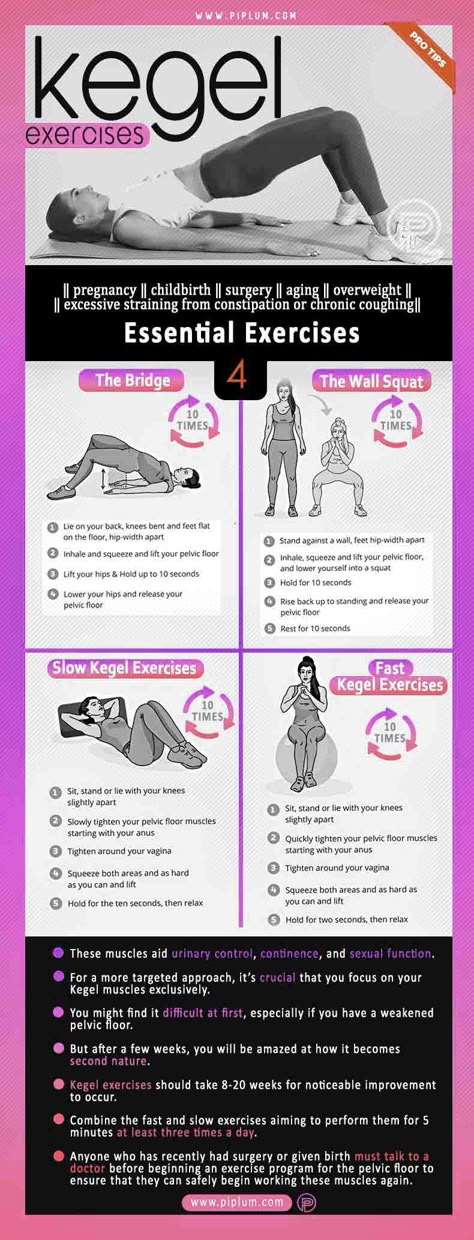 How to do gymnastics can be learned from step-by-step instructions. You need to perform the “Elevator” exercise as follows:
How to do gymnastics can be learned from step-by-step instructions. You need to perform the “Elevator” exercise as follows:
1. Turn on your imagination and mentally divide the space of the uterine “mine” into “floors”. Imagine that an "elevator" runs between floors.
2. You want the "elevator" to go up from below and stop at each "floor". To do this, you need to strain the muscles at a certain level.
3. Then the "elevator" should return back in a similar way.
4. Relax and exhale for a few seconds, and then proceed to repeat the exercise.
Kegel exercises for pregnant women in the 3rd trimester include the "Lift", although it can be done from the first days. At first, there may be difficulties with implementation. It is important to focus on all muscle groups being worked out in order to achieve the desired result.
Lift
If you're looking for 2nd trimester Kegel exercises, The Wave will help strengthen your perineal and anus muscles.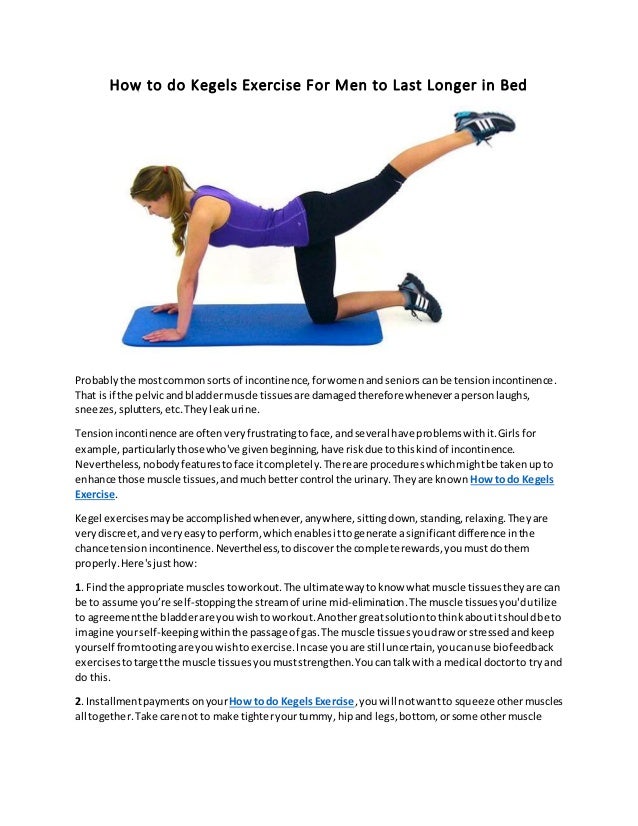 Do the following:
Do the following:
1. Lie down on the floor. You need to lie on your back.
2. Put your legs on the fitball. In the absence of a ball, you can place your legs on a sofa or other hill.
3. Then alternately tighten the muscles of the perineum and anus.
4. Relax for a few seconds and do up to 10-15 sets.
At first, actions should be performed slowly, then gradually increase the rhythm and number of approaches.
"Wave"
Goalkeeper
This Kegel exercise for pregnant women in the 3rd trimester can be dangerous and lead to undesirable consequences. It is strictly forbidden to do it with uterine hypertonicity and other problems. You can start performing only after the approval of the gynecologist.
You can start performing only after the approval of the gynecologist.
Take the lotus position. Bring your feet together, spread your legs apart, while relaxing as much as possible. Hold your breath and push lightly, but don't overdo it, to keep the pelvic organs from descending. Relax after 20-30 seconds. Repeat the steps several times. During breaks, breathe evenly and deeply so that sufficient oxygen enters the body.
Achilles Tendon Stretch
Start after a short warm-up. If you do not follow this rule, you can damage unheated muscles. Stand so that your feet are shoulder-width apart. Spread your socks to the sides, then sit down so that your legs do not open from the floor, and your back remains straight. Difficulties may arise at first. You can put a chair in front of you and hold on to its back. Gradually, the stretch will improve, so doing the exercise will be easier. Well, this technique is suitable for later periods, when lying down is not recommended.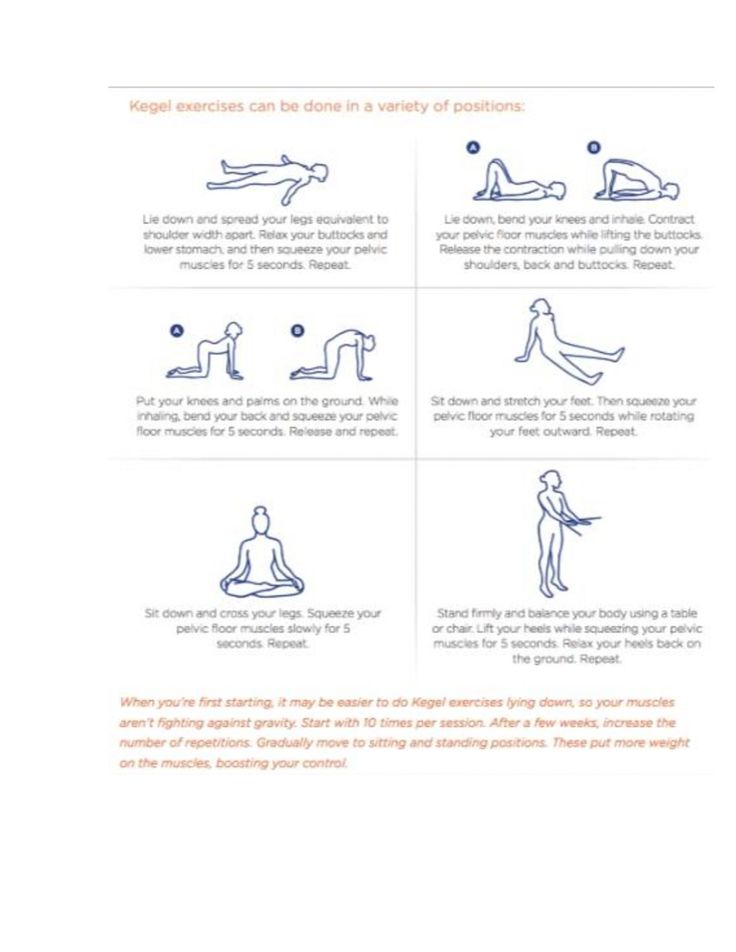
You can watch how to do the Kegel exercise for pregnant women on video so that you can do everything correctly.
Proceed as follows:
1. Lie on the floor on your back.
2. Place your feet on the floor and pull them slightly towards you.
3. Place your arms along your body.
4. Raise your pelvis. Stay in this position.
5. Then get down on the floor, relax.
6. Do up to 10 sets. Increase the number of approaches each time.
Observe correct breathing. You can clearly see how to perform Kegel exercises for pregnant women in the photo.
Madonna
In general, this is a simple Kegel exercise for pregnant women.
Technique:
sit on a mat on the floor so that your buttocks are on your feet;
take your hands back and rest your palms on the floor;
lift your hips, while the press will be tense;
simultaneously squeeze the perineum;
return to the starting position and relax for a few seconds.
Repeat steps up to 10-15 times.
Kegel trainers during pregnancy and postpartum
We do not recommend the use of Kegel trainers during pregnancy. Only during planning and after childbirth. Reviews of women and scientific work of gynecologists confirm that when using simulators before and after childbirth, the likelihood of problems associated with dysfunction of the pelvic floor muscles is significantly reduced.
With the advent of the baby, there will not be enough time for gymnastics, so we recommend purchasing the Pelvifine muscle stimulator. With it, you can exercise your pelvic floor muscles while feeding your baby, watching a movie, etc. And when doing household chores, you can use vaginal cones.
The main advantages of Kegel trainers:
easy to use;
may apply at any time;
are characterized by high efficiency;
gently act on the muscles of the intimate area.
You can see the full list of vaginal trainers in the Catalog section.












